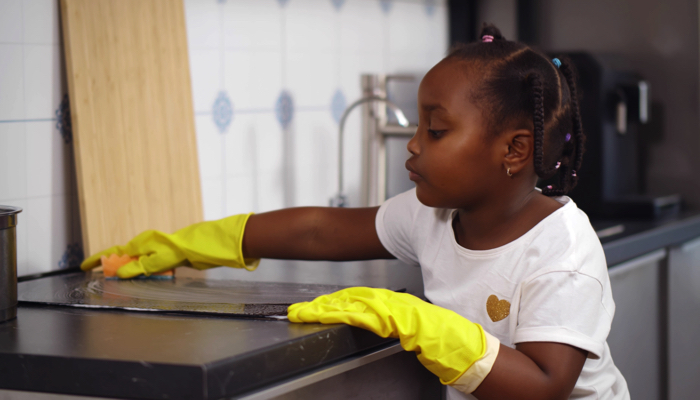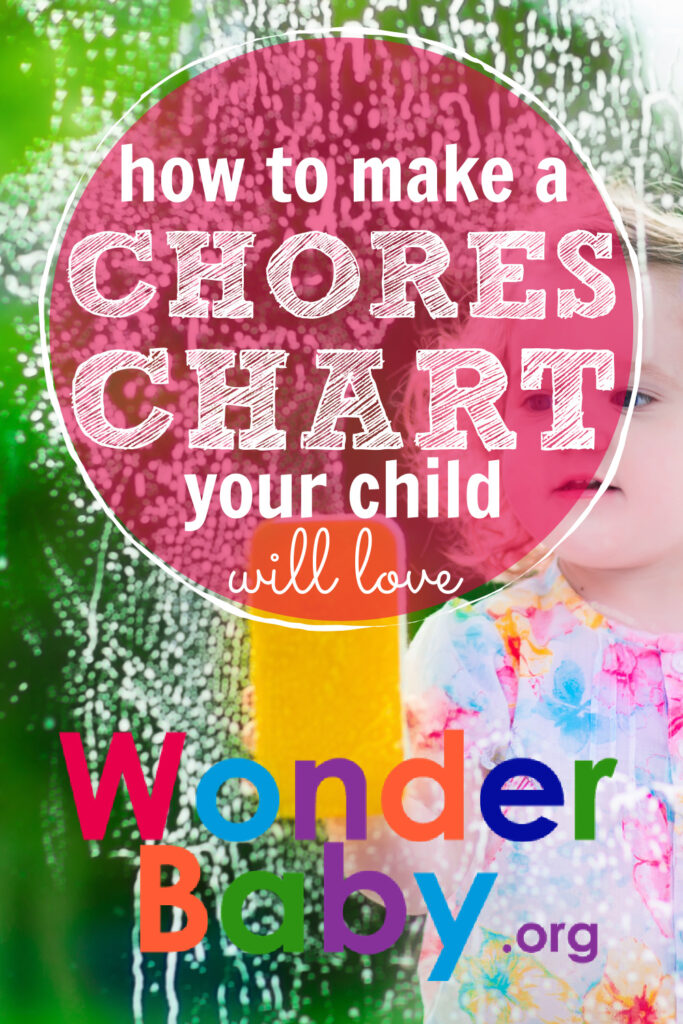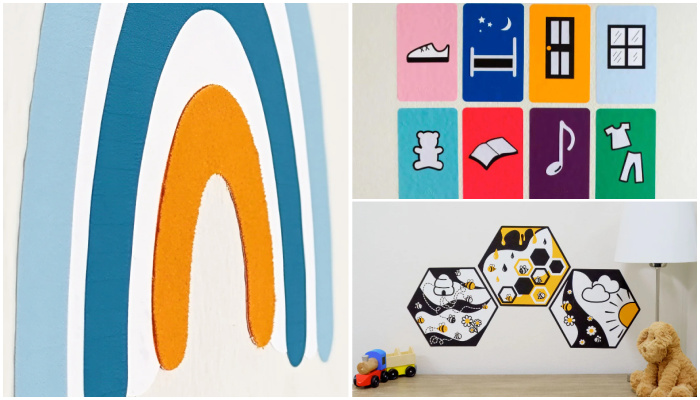How to Make a Chore List Your Child Will Love

- Regular weekly chores teach kids important life skills and responsibility, but are often seen as drudgery by kids who would rather spend their time playing.
- Learn how to change your child from a chore-chart-avoider to a chore-list-lover by making a few simple adjustments.
- Including your child in creating, choosing, and evaluating chore lists will make them feel more empowered and valuable.
What is it about a chore chart that causes a parent’s stomach to clench and reduces kids to tears? Why is chore time so often a negative experience?
Simply put, it’s what’s on the list. Chores are not a preferred activity and they are not fun. Chores are, well, work. But here’s some good news: The right kind of chore chart holds the potential to transform kids’ pessimistic attitudes about chores into an optimistic mindset!
Do Kids Really Need Chores?
Many parents find themselves asking whether or not they should assign chores to their kids. After all, it’s often easier to finish the housework yourself and avoid the hassle of dealing with a sulky child. But chores are more than simply a way to get someone to help you clean or organize your home; they’re a way to build character and life skills!
Assigning chores to your child will teach them responsibility while instilling a strong work ethic; they learn that they have to contribute to the household to keep things running smoothly. Completing chores on a list or chart will raise self-esteem and develop a sense of accomplishment; kids feel proud when they see how their efforts have helped improve the home. Starting a chores routine before children begin school will result in a positive experience for years to come.
(Download this sample chore chart to get started!)

At What Age Should I Assign Chores to My Kids?
Deciding when to start assigning chores to your kids can be difficult. On the one hand, you want them to pitch in around the house and learn responsibility at an early age. On the other hand, you don’t want to overload them with too much work or cause stress by pushing tasks before they are developmentally ready.
Ultimately, when to start assigning chores should be based on your child’s maturity level and ability to handle additional tasks. This could be as young as three or four years old for most kids, while they still love to be helpers and aim to please you.
For others, it might not be until they’re closer to six or seven. If your child struggles with impulsivity or has difficulty following directions, it might be best to wait a bit longer before adding chores to their plate. There is no set age when kids should start doing chores. It’s important to individualize the decision based on your child’s unique needs and capabilities.
Are Chores Accessible for Kids Who Are Blind?
It’s often tempting for parents to do things for their kids, and this is even more true for parents of children who are blind or visually impaired. No one wants to watch their child struggle, not to mention that sometimes it’s just faster and easier for us parents to do things ourselves. But what are our kids learning when we clean up for them and don’t ask them to pitch in?
If you are the parent of a child who is blind, you may worry about what types of chores your child can do as they grow older. However, there are many ways to make common household tasks accessible for kids who are blind. For instance, Braille labels can be used to identify the contents of cabinets and drawers. This can help kids find the items they need when it’s time to do a chore. In addition, raised-dot patterns can be used to indicate the edges of countertops and other surfaces. This can help kids know where to start and stop when cleaning or performing other tasks. For children with vision, try to find ways to use bright colors or color contrasts when setting up their chores. By taking a few simple steps, parents can make sure that their child has the opportunity to participate in all kinds of everyday activities.

How Can I Make Chores Fun?
At some point, your kids will inevitably rebel against chore time, typically when they reach school age and begin searching for more independence. If negativity has already set in, there are actions you can take now to reverse the curse of the chore chart. First, add expected chores matched to their age and development. Next, inspire children to look forward to completing chores by adding these five whole-child enhancing motivators!
1. Let Your Child Choose
Choices empower children to choose their own destiny. Decision-making leads to self-confidence and helps kids feel in control. According to Erin Leybn, LCSW, Ph.D., “Giving kids a choice also builds respect and invites cooperation.”
Rather than giving your child an order, give them a choice. For example, “Would you rather feed the dog or pick up the toys in the living room?” This gives your child the feeling of being in control while also encouraging cooperation. Creating a chores chart with choices built-in also adds an element of fun to a usually mundane task as kids are prompted to look over a list and choose the best option.
Some sample chores by age may be:
| Age | Choice 1 | Choice 2 |
| 3-4 years old | Pick up books and put back on the bookshelf | Match socks in the laundry |
| 5-8 years old | Help set the table for dinner | Carry dirty dishes to the sink |
| Preteens | Take out the trash | Help with the dishes |
2. Ask Your Child to Contribute
Input will allow children to feel their voice matters and will lead to self-sufficient decision-makers in the future. Adults make decisions about what chores we want to do; children shine if given the same respect. Following a successful week, celebrate your child’s productivity and then ask for ideas about what chores to add to the next chart.
This can also be a great time to introduce larger home projects to your chore list. Does your child want to help grow a summer garden or maybe redecorate their bedroom? Break up big projects into smaller tasks and add them to the chores list. Variety on the list will keep attitudes fresh while also helping your child see how small steps can lead to bigger outcomes.
3. Keep Your Kids Moving
Exercise should be happening every day and chore charts provide an opportunity to get your kids moving. Whether it’s washing windows to strengthen motor skills or taking the dog for a walk around the yard, active kids are happier.
Does your child love music and dance? Then turn that chore into a dance party! Pull weeds with music and move to the beat or wipe down the windowsills while dancing or singing. Music can add fun to an otherwise boring task.
4. Reflect and Record Thoughts and Feelings
Reflection creates opportunities to think about feelings and allows children to give input. Taking the time to consider their feelings leads to skills in self-regulation, mindfulness, and coping strategies. According to educator and instructional coach Noah Teitelbaum, “Reflective self-awareness helps students build resilience in the classroom, at home, and among peers.” Asking kids to think about, draw, or write what they liked best about the last week’s chore chart shows that you respect their opinion.
5. Add Reading as a Chore Option
Reading can be added to a chore list for bonus reading practice! Just right books that can be read independently are an excellent option. Younger kids can choose to pretend read to the family dog or to a stuffed animal or go on a picture book walk with a parent. Keeping reading choices fun will help chore time feel like playtime!
Chore charts can be motivating while teaching important lifelong skills. Parents have the power to change a child’s ‘Yuck” to ‘Yes!’ when it’s chore time by introducing young children to daily chores in a way that promotes a positive mindset about completing a job and avoids the need to negotiate, argue, or threaten. Start early and continue to add positive experience chore choices, input, exercise, reflection, and reading to nurture well-rounded, compliant, happy go-getters.

Related Posts

Parenting
Sensory Wall Art: 5 Tips to Create a Room Your Blind or Low-Vision Child Will Love
Even if your child can’t see their surroundings, personalizing and decorating their room with thoughtful, sensory-friendly design can make a big difference in their confidence, independence, and joy.

Parenting
4 Tips to Manage Twins Alone as a Single Parent
Taking care of twins alone as a single parent can feel overwhelming. Learn practical ways to help lighten the load.

Parenting
How to Manage Twin Escalation Syndrome
Discover effective strategies for managing twin escalation syndrome, including promoting individuality and fostering positive interactions.